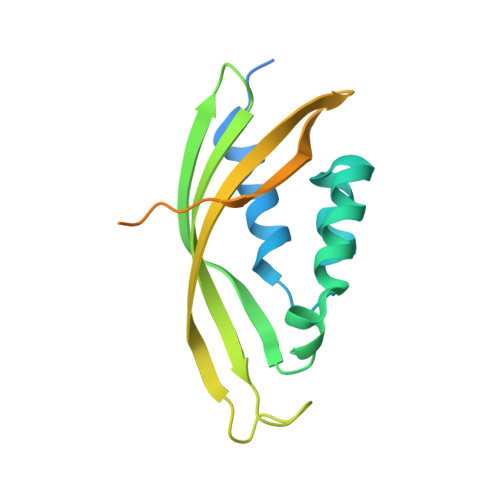Structure of the enterococcal T4SS protein PrgL reveals unique dimerization interface in the VirB8 protein family.
Jager, F., Lamy, A., Sun, W.S., Guerini, N., Berntsson, R.P.(2022) Structure 30: 876
- PubMed: 35429437
- DOI: https://doi.org/10.1016/j.str.2022.03.013
- Primary Citation of Related Structures:
7AED - PubMed Abstract:
Multidrug-resistant bacteria pose serious problems in hospital-acquired infections (HAIs). Most antibiotic resistance genes are acquired via conjugative gene transfer, mediated by type 4 secretion systems (T4SS). Although most multidrug-resistant bacteria responsible for HAIs are of Gram-positive origin, with enterococci being major contributors, mostly Gram-negative T4SSs have been characterized. Here, we describe the structure and organization of PrgL, a core protein of the T4SS channel, encoded by the pCF10 plasmid from Enterococcus faecalis. The structure of PrgL displays similarity to VirB8 proteins of Gram-negative T4SSs. In vitro experiments show that the soluble domain alone is enough to drive both dimerization and dodecamerization, with a dimerization interface that differs from all other known VirB8-like proteins. In vivo experiments verify the importance of PrgL dimerization. Our findings provide insight into the molecular building blocks of Gram-positive T4SS, highlighting similarities but also unique features in PrgL compared to other VirB8-like proteins.
Organizational Affiliation:
Department of Medical Biochemistry and Biophysics, Umeå University, 90187, Umeå, Sweden.

















